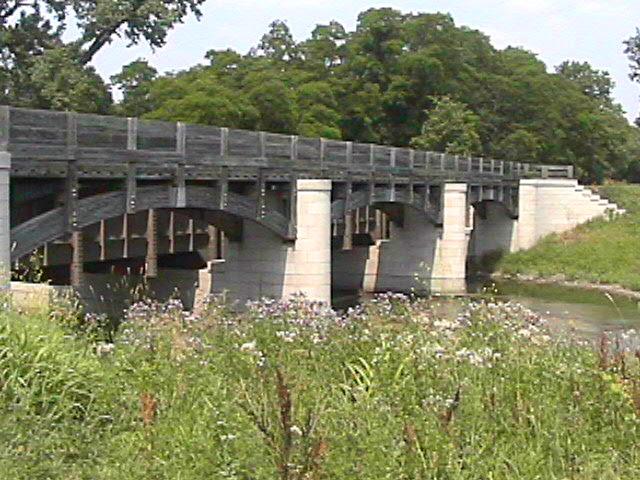To provide observations and information on the emerging fields of landscape scale conservation, heritage preservation, and sustainable community development.
Newsletter
Stay up-to-date with the latest nature, culture and community news.
We won’t spam you or share your information. Newsletters are sent approximately 10 times a year. Unsubscribe at any time.
Behind the Scenes of the Legislative Process
A National Network for the Labor Movement

The National Park Service Brand: Do I have a Franchising Opportunity for You!
Over the last year the George Wright Journal has been running a series of Centennial Essays reflecting varying perspectives on the future of the National Park Service. The most recent piece by Holly Fretwell, a research fellow at the Property and Environment Research Center (PERC) in Bozeman, Montana, offers some new ideas.

Half-century Legacy of LWCF at Risk
In just about one month, the Land and Water Conservation Fund is set to expire, a deadline that threatens to halt one of the country’s most effective landscape protection initiatives. Recent weeks have brought news of progress towards a bi-partisan resolution, but until a bill passes Congress, the future remains uncertain. What was the context of the program’s passage in 1964 and how did members of the Johnson Administration view the bill?
The Future of Administrative Histories
One way to learn the stories behind the creation and subsequent management of National Park units, regions, and programs across the country is through reading their administrative histories. For decades, NPS has supported the research and writing of these valuable documents, but how are they actually used (if at all?) by both park staff and other interested individuals and groups?

National Heritage Areas at Thirty: Help tell the Story
2014 marks the 30th anniversary of the National Heritage Areas program. Conceived as a way to cross the culture – nature divide, heritage areas stretch beyond political boundaries to tell landscape scale histories and protect regional environmental resources. The areas tell stories that are too big, too gritty, too alive and too expensive to be confined within a traditional national park unit. Yet, heritage areas have been consistently hammered by shrinking federal budgets, questions about the proper role of government, and even their right to exist. Read more about how the LLO plans to mark this important anniversary.

Blackstone River Valley: Sounding a Retreat from Landscape Scale Work?
Not so long ago the Blackstone River Valley National Heritage Corridor was the pride of the National Park Service (NPS), exemplary of the agency’s new approach to managing living landscapes. But somewhere along the way, the NPS changed direction. A Special Resource Study, for example, rejected the continuation of the heritage commission, instead recommending the creation a far more traditional national park. What is going on with this once exemplary partnership model?

The National Park Service Brand: Do I have a Franchising Opportunity for You!
Over the last year the George Wright Journal has been running a series of Centennial Essays reflecting varying perspectives on the future of the National Park Service. The most recent piece by Holly Fretwell, a research fellow at the Property and Environment Research Center (PERC) in Bozeman, Montana, offers some new ideas.

Half-century Legacy of LWCF at Risk
In just about one month, the Land and Water Conservation Fund is set to expire, a deadline that threatens to halt one of the country’s most effective landscape protection initiatives. Recent weeks have brought news of progress towards a bi-partisan resolution, but until a bill passes Congress, the future remains uncertain. What was the context of the program’s passage in 1964 and how did members of the Johnson Administration view the bill?
The Future of Administrative Histories
One way to learn the stories behind the creation and subsequent management of National Park units, regions, and programs across the country is through reading their administrative histories. For decades, NPS has supported the research and writing of these valuable documents, but how are they actually used (if at all?) by both park staff and other interested individuals and groups?

National Heritage Areas at Thirty: Help tell the Story
2014 marks the 30th anniversary of the National Heritage Areas program. Conceived as a way to cross the culture – nature divide, heritage areas stretch beyond political boundaries to tell landscape scale histories and protect regional environmental resources. The areas tell stories that are too big, too gritty, too alive and too expensive to be confined within a traditional national park unit. Yet, heritage areas have been consistently hammered by shrinking federal budgets, questions about the proper role of government, and even their right to exist. Read more about how the LLO plans to mark this important anniversary.

Blackstone River Valley: Sounding a Retreat from Landscape Scale Work?
Not so long ago the Blackstone River Valley National Heritage Corridor was the pride of the National Park Service (NPS), exemplary of the agency’s new approach to managing living landscapes. But somewhere along the way, the NPS changed direction. A Special Resource Study, for example, rejected the continuation of the heritage commission, instead recommending the creation a far more traditional national park. What is going on with this once exemplary partnership model?


